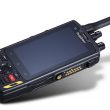The Repeater-customer Learning Curve
Ah, repeaters and those who use them.
Many of you who own or operate a repeater system used by more than one customer (mainly community repeaters) have heard those users complain about others “hogging” the machine. Or, they themselves overuse it, but they feel that because they paid to use it, they should not have to listen to “those other guys” on it as well.
As I have told many of my customers, “You can’t complain about other clients using these systems, as they, too, are paying customers like yourselves.”
To confirm why they are being subjected to the squawks of others, I ask if they keep the mics on the hook when they are waiting for a call. The most frequent answer is “No, we leave the mic on the seat so we can grab it faster. Why do you ask?”
I explain that the radios do not automatically revert to P.L. (Motorola private line)-receive mode just because you unkey. The mic must be returned to the hanger for the radio to be on “full P.L.” so you don’t hear any other users on the machine. That’s why we programmed every radio with P.L. on receive.
“Oh, that’s why we never heard any others for so long (laughing)!”
A community repeater is just that: community. That normally means more than one company is using it, too. It means convincing users that they are but one out of several who pay for and use the system.
It means coaching them by saying “Out of courtesy, please keep your communications brief and, please, do not use profanity if it can be avoided. Be considerate to others who could also be hearing what you say and may be offended by some ‘off-color’ remarks made to your co-workers.”
Attracting new customers brings many familiar questions: “Will this service be able to reach us no matter where we are with our trucks?” or “What do I get for this monthly airtime bill?” Maybe you have also been asked “Your service is just like my cellphone, right?” These and so many other questions face us constantly. We attempt to gracefully explain that while we do offer communications to many people, how it can be of use and service to their company is all in how they make use of it and what they expect it to provide them with, as well.
Some potential customers say, “XX dollars per month? It’s too high for us. We might as well keep using our cellphones to stay in contact with our drivers.”
We come back with “You can do that, but let’s take a look at a bigger picture here, and we’ll compare what you now spend each month just to have cellphone use (not to mention the monthly airtime accrued with every minute being billed to you) instead of one, rather low, monthly bill we charge.”
In a typical “pitch,” we say: “Let’s compare what you spend on phone calls each month to the monthly airtime bill we’d send you, and let’s see just where the benefits of both lay, OK? Sure, you have a higher initial outlay of cash for radios, antennas and cables, and also a monthly bill for repeater use. But let’s average this over a two-year period, and you will see that your cellphone bills are much larger with each passing month compared to having service on our repeater.
And those phone bills never go down. You are saving money each month by not having to buy or rent those radios, but you are paying higher use fees. With our repeater system, there’s one low, flat-rate bill each month—no matter how many minutes you stay on the air. We use actual drive-outs to ‘estimate’ system coverage, not simulated coverage maps laid out on the PC. Our method gives the best cost-to-use ratio and provides better planning for customers who might be on the ‘fringe’ of one system or another.”
Maintenance
Maintaining the repeaters in 100% duty cycle means we must keep spare parts on hand at each site, ready for quick replacement should a pre-amp “go south.” Monthly service logs and a complete record of systems checks and alignments are mandatory for us. A repeater that’s down, or degraded in service, loses customers faster than lousy restaurant food, and it nearly takes an act of Congress to prove that a dissatisfied customer “jumped ship” prematurely.
Community repeaters are used and needed, but only when they serve the customer’s needs to the best of their ability. Low cost, reliability and constant availability make community repeaters work for the customer and you.
“Point-of-Sale Perspective” is a guest editorial column contributed by and for MRT’s radio dealer readers. Opinions expressed here are edited for space; they are those of the author, and may or may not reflect editorial positions of MRT.
MRT pays a writer’s fee for each “POS Perspective” column accepted for publication. Commentaries should be about about 700–800 words long.
Dealers interested in contributing to this column should contact Kari Taylor, associate editor, by email at [email protected].












